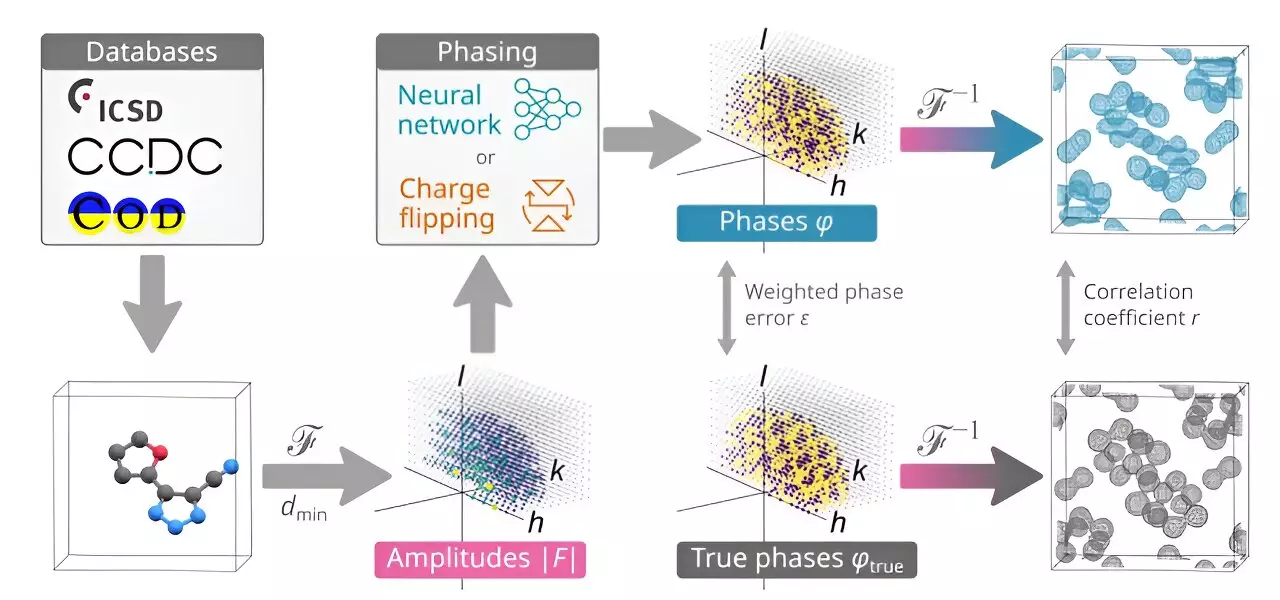Chemists at the University of Copenhagen have recently made a groundbreaking discovery in the field of chemistry by developing an artificial intelligence application named PhAI. This innovative tool is designed to determine the phase of x-rays that crystals have diffracted, ultimately aiding in the prediction of the structure of small molecules. The trio of chemists leading this project, Anders Larsen, Toms Rekis, and Anders Madsen, have outlined the development process and the successful results of their system in a paper published in the prestigious journal Science.
In recent years, there has been a growing trend of collaboration between chemists and computer scientists to develop AI applications that can assist in various chemical processes. This synergy is particularly beneficial in chemistry due to the trial and error nature of many experiments. For example, AI has been used to predict protein structures with promising results. Building on this success, the team at the University of Copenhagen sought to apply AI technology to the prediction of small molecule structures, a significant challenge in the field of chemistry.
The current method of predicting the structure of small molecules involves converting them into solid crystals and subjecting them to x-ray beams. By analyzing the diffraction patterns that result from the interaction of the x-rays with the crystals, chemists can deduce the molecular structure of the compounds. However, a major obstacle in this process is the inability to accurately measure the phase of the x-rays, leading to fuzzy diffraction patterns. The uncertainty introduced by this measurement limitation often hinders the precise determination of molecular structures.
In their research, the team at the University of Copenhagen harnessed the power of artificial intelligence to overcome the challenges posed by fuzzy diffraction patterns. They developed PhAI by generating millions of synthetic small molecule structures and simulating the corresponding fuzzy diffraction patterns that would arise from imperfect crystal structures. By training the AI on this extensive dataset, they established a correlation between crystal structures and diffraction patterns, enabling the AI to infer both phase and intensity information from the patterns.
Validation Through Testing
Through rigorous testing, the researchers demonstrated the efficacy of PhAI in predicting the structure of 2,400 small molecules where the structure was already known. The success rate of the AI application in accurately determining molecular structures highlights its potential as a valuable tool in the field of chemistry. Moving forward, the research team aims to further enhance the capabilities of PhAI to extend its predictive accuracy to larger molecules with up to 50 atoms.
Future Implications and Continued Research
The development of PhAI represents a significant advancement in the field of chemistry, showcasing the potential of artificial intelligence in revolutionizing traditional chemical processes. By leveraging AI technology to decipher fuzzy diffraction patterns and predict molecular structures, chemists can streamline their research efforts and accelerate the discovery of new compounds. As the research team continues to refine and expand the capabilities of PhAI, the future of chemistry is poised for transformative innovations driven by the integration of artificial intelligence.


Leave a Reply